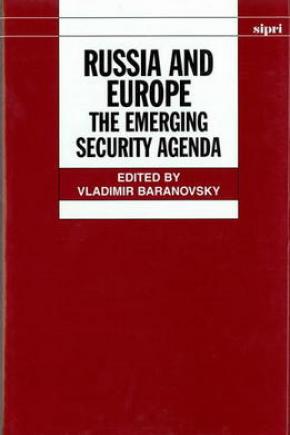Russia and Europe: The Emerging Security Agenda
1. Introduction
Alexei Arbatov, Vladimir Baranovsky, Pierre Hassner, Robert Legvold, John Roper and Adam Daniel Rotfeld
Part I. The security context
Map: The territory of Russia by 1600 and 1700
Map: The Russian Empire by 1800 and 1900
2. The historical background of Russian security concepts and requirements
Lothar Rühl
3. The 'Russian Question'
Robert Legvold
Part II. Domestic political developments: the security implications
Map: The 89 'subjects' of the Russian Federation
Background chronology
4. The vicissitudes of Russian politics
Alexei Arbatov
5. Towards a post-imperial identity
Marie Mendras
6. Russia's emerging statehood in the national security context
Aleksei M. Salmin
Part III. Debates on Russia's national interests
Background chronology
7. Russian foreign policy thinking in transition
Alexei Arbatov
Part IV. Military aspects
Map: Russian Military Districts and naval bases
Background chronology
Key facts
8. The Russian Armed Forces: structures, roles and policies
Roy Allison
9. The changing role of military factors
Alexander A. Konovalov
Part V. The post-Soviet conflict heritage
Map: The former Soviet Union and the successor states
Principal categories of conflict on the territory of the former Soviet Union
Background chronology of peacekeeping activities
Key facts
10. Conflicts in the CIS and their implications for Europe
Christoph Royen
11. Post-Soviet conflicts: new security concerns
Victor Kremeniuk
Part VI. The Slav triangle: challenges and opportunities
Map: Russia, Belarus and Ukraine
Background chronology: Russia's relations with Belarus and Ukraine
Key facts
12. The East Slav triangle
Vasily Kremen
13. Russia and the Slav vicinity
Sergei Karaganov
Part VII. The Baltic dilemma and relations with Nordic Europe
Map: Russia, Scandinavia and the Baltic countries
Key facts
14. Russian policy in Northern Europe
Lena Jonson
15. In search of a new strategy in the Baltic/Nordic area
Alexander A. Sergounin
Part VIII. Russia and East-Central Europe after the Warsaw Pact
Map: Russia and East-Central Europe
Background chronology
16. Russia and East-Central Europe: strategic options
Wojtek Lamentowicz
17. Russian security and East-Central Europe
Yuriy Davydov
Part IX. The Balkan connection
Map: Russia and the Balkans
Background chronology: Russia and the former Yugoslavia
Background chronology: Russia and the conflict in Moldova
Key facts
18. Russia and the Balkans: old themes and new challenges
F. Stephen Larrabee
19. The Balkans test for Russia
Nadia Alexandrova-Arbatova
Part X. Challenges from the south
Map: Russia and the Transcaucasus in geopolitical context
Summary of the principal armed conflicts in the Caucasus
Key facts
20. Russia in the Caucasus: interests, threats and policy options
Maxim Shashenkov
Part XI. Economic factors: implications for relations with Europe
Background chronology
Key facts
21. Russia and the political economy of the transformation period
Hans-Joachim Spanger
22. Economic transformation in Russia and political partnership with Europe
Yuriy Borko
Part XII. The emerging international order in Europe: what place for Russia?
Russia's relations with the principal multilateral institutions in Europe
Russia in the European institutional architecture
23. Redefining Russia's role in Europe
John Roper and Peter van Ham
24. Russia and European institutions
Andrei Zagorski
Part XIII. Conclusion
25. Assessing Russia's interaction with Europe
Vladimir Baranovsky

